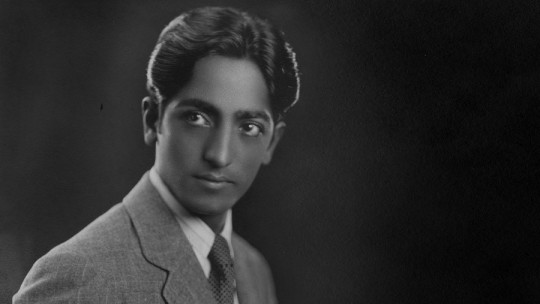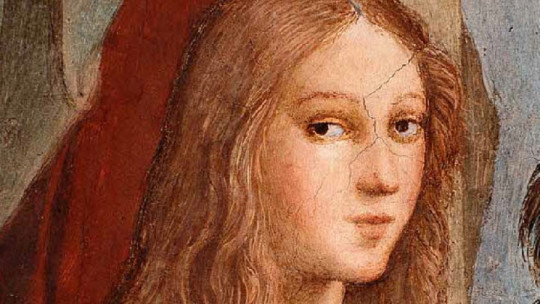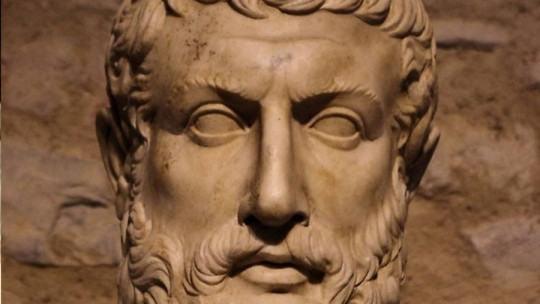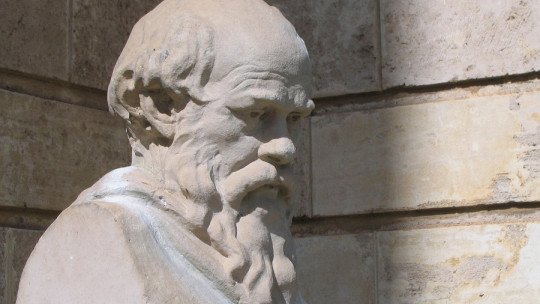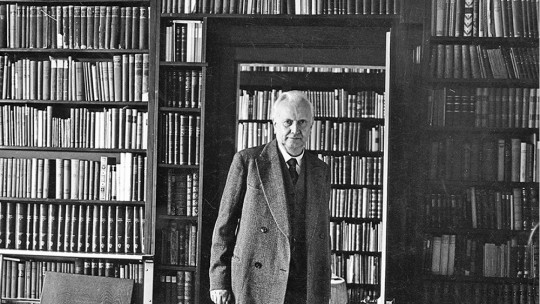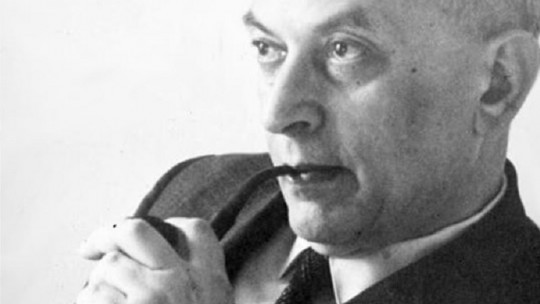Jiddu Krishnamurti has been one of the great spiritual lights of the 20th century, awakening consciences and admired by many. Initially seen as a new messiah, at one point in his life there was a change so profound that he rejected any title of teacher or authority.
His maxim was that personal discovery does not come from outside, in the forms of dogmas and religions, but by looking within, within ourselves, which is the place where we will have the answer to the question about who we are.
Jiddu Krishnamurti’s life is a long journey, with its twists and turns, in which he had the honor of rubbing shoulders with great figures of his time and influenced the philosophical thought of the 20th century.
Let’s see in depth who this great thinker was through a biography of Jiddu Krishnamurti
Brief biography of Jiddu Krishnamurti
From being an ordinary Hindu boy to being seen as the new messiah, the “teacher of the world.” This would be the shortest and simplest answer to the question “who was Jiddu Krishnamurti?”
Giving more detail, we would say that was a well-known writer and speaker on philosophy and spirituality, native of India but he had the opportunity to travel to countries like England and the United States, in addition to influencing the Hindu separatist movement. His life is very long, 90 years full of mystical experiences of all kinds.
Early years: baptized in honor of the shepherd god
Jiddu Krishnamurti was born on May 12, 1895 in Madanapalle, in the present-day state of Andhra Pradesh, southern India. Being the eighth child of the Jiddu family was named after the shepherd god Krishna with whom he shared this characteristic.
His father was Jiddu Naraniah, a public official of little importance but who revealed a spiritual vocation in 1882 when he joined the Theosophical Society. Her mother, Sanjeevamma, claimed to have psychic powers, saying that she experienced visions and could see the colors of people’s auras. Her mother devoted herself with great dedication to little Krishna, who was in weak health, plagued by frequent attacks of malaria.
Sanjeevamma dedicated his afternoons to enlightening Jiddu Krishnamurti by reading him the sacred Hindu scriptures , telling him about the god he was named after, Karma and reincarnation. Krishnamurti’s mother claimed to see a daughter in the garden of her house who had died prematurely, asking her son if he saw her too.
The afternoons he spent with his mother were always a fond memory for Krishnamurti and, when she died in 1905, he was overcome with terrible pain. Krishna was barely 10 years old when his mother left, but knowing that she was psychic and that she met with spirits helped him overcome the terrible loss and feel that, in a way, she was with him.
The young Jiddu Krishnamurti did not excel in studies. His lack of interest in class and somewhat alienated attitude made his teachers think he had some type of intellectual disability His poor academic performance and the death of his mother were added to other bad news, which was the forced retirement of his father, whose pension was barely enough to support the family.
Transfer to Adyar and contact with the Theosophical Society
Seeing that only by working would he be able to keep the family going, the patriarch was forced to ask for a job at the headquarters of the Theosophical Society, located in the city of Adyar The director of the entity, Annie Besant, decided to give her a job, pressured by her tireless insistence.
The Theosophical Society had been founded by Madame Helena Petrovna Blavatsky, a Russian citizen who had lived in Tibet and who had been in contact with the Masters of the Occult Brotherhood. This lady would later meet Colonel Henry Steel Olcott, a psychic researcher from the US, and together they would found the organization, which had the mission of studying ancient wisdom and exploring paranormal phenomena.
Given the father’s new job, the Jiddu family moved to Adyar to be closer to the headquarters of the Theosophical Society. At that moment The institution was going through a critical moment, since the approach of the coming of a new messiah had gained strength in many esoteric circles Blavatsky, years ago, had postulated that the purpose of the Society was to prepare for that advent that was not going to take long to arrive, even though she would die without being able to see it in 1891.
After the death of Colonel Olcott in 1907, Annie Besant would become president of the Society and would decide to reinstate Charles Webster Leadbeater, a former Anglican clergyman who claimed to have clairvoyant powers, in a position of high responsibility. The figure of Leadbeater would be key to Krishnamurti’s life, since this cleric would be the one who, thanks to a series of coincidences, believed he saw in the figure of the young Krisha the arrival of the long-awaited advent in Society.
While the Jiddu family was in Adyar in 1908, Krishnamurti attended a school in the area and, in the afternoons, he played with his brothers by the river, near the headquarters. It was on the banks of the river that Leadbeater discovered the young man, seeing in him a singular aura, devoid of any selfishness. This made Leadbeater believe that he would be a great orator and spiritual teacher. That is why The former cleric asked his father to take charge of the education of Krishnamurti and his little brother Nitya
Leadbeater was convinced that Krishnamurti was the messiah long awaited by the Society and associated esoteric circles, while his little brother Nitya would be his spiritual companion in life. Leadbeater predicted that they would both be great, that they would be central to history, and that in their previous lives they were disciples of the Buddha himself.
Annie Besant listened to Leadbeater’s statements, becoming convinced and going even further. Besant believed that Jiddu Krishnamurti was neither more nor less “the teacher of the world”, the Bodhisattva Maitreya, who was manifesting through the body of the young man Taking advantage of Besant’s support and his fanaticism, Leadbeater managed to remove the two brothers from his paternal home and take them to live at the headquarters of the Theosophical Society.
Upon arriving at the organization, the Society built a protective wall around the young future messiah Krishnamurti and his spiritual companion Nitya. This is how they began to be introduced to all kinds of spiritual practices and, very soon, Krishnamurti granted Annie Besant the title of mother.
However, many saw in the Society an institution that intended to do business with the messiah The Society depended, for the most part, on donations and no one would have considered it strange that they had taken advantage of the story that young Krishna was the messiah to profit. Furthermore, a rumor arose that Leadbeater was homosexual and that he attempted to derive sexual pleasure from little Krishna.
When Besant tried to take Krishnamurti to England in 1911, His father, who had heard the rumors, started a lawsuit to get his children back , a trial that he ended up losing. This is how the “messiah” began his pilgrimage throughout the world, “protected” by an organization that, more than a philosophical school, had a vision of a sect.
Travel to England
What was going to become a simple trip to England, lasting perhaps a little more than a year, became a stay of ten, lasting until 1921. Jiddu Krishnamurit, who until recently was just an ordinary Hindu boy, had become in the future “messiah”, wandering as a guest in the homes of great rich members of the Theosophical Society. He was far from his family, only accompanied by his little brother Nitya, discovering the Western world in all its splendor
He attended all kinds of society galas, went to the theater and was the center of attention. Surrounded by all kinds of luxuries and new experiences, his life was far from being that of a messiah. He bought expensive clothes, developed a taste for cars, and it seemed that his spiritual life had been replaced by a more earthly one.
But the paths of destiny are inscrutable and, in 1922, everything changed. That year he traveled with his brother to the United States, specifically to a property located near Santa Barbara, in California. It would be there that the young Krishnamurti would awaken spiritually, changing the course of his life.
The young man He begins to suffer severe pain, faints and calls his mother in his native language, asking to be taken to a forest in India where there were said to be powerful beings. Among his pains he had visions of Buddha, Maitreya and other masters of the occult hierarchy. It is, both according to his brother Nitya and by Krishnamurti himself, the opening of his third eye.
After that, he maintained a fairly busy schedule, traveling to different countries to attend conventions prepared by the Theosophical Society, accompanied by his brother. But, unlike what Leadbeater and Besant had predicted, his brother was not going to continue accompanying him anymore since, on a sad November 13, 1925, young Nitya left this world.
The loss of his brother devastated him. He cried, moaned and sobbed loudly, remembering his dear brother. It seemed that his life was all misfortunes: first, his mother died; Then, he is separated from his father and brothers by a mysterious and shady organization; and, finally, the only family member he had by his side, who had been with him for 15 years, died suddenly.
Nitya’s death awakens a great change in Jiddu Krishnamurti’s life and the way he saw himself Besant and Leadbeater had told him that he was the messiah, the teacher of the world, and that his sister was going to be his companion, just as they had seen in his predictions. But one of them had clearly failed, since Nitya was dead. It is then that he doubts whether he is the messiah and, especially, the powers of his two teachers in the Theosophical Society.
The break with the Theosophical Society
After Nitya’s death, Jiddu Krishnamurti begins to distance himself from the Theosophical Society. He becomes independent from the hierarchies imposed by the organization and adopts a discourse and message that is more focused on himself. He demonstrated his independence in the conventions he offered, exposing his new point of view even if Annie Besant was present
By giving his freest and purest opinion he felt how he was becoming more and more independent, and shared his vision of being one unit with the universe. It is from 1927 onwards that we can say that Krishnamurti began to speak in a way that was radically opposite to how the Theosophical Society promulgated his teachings. These new notions disturbed the Society, which began to spread that it was not Lord Maitreya who was speaking through Krishnamurti, but evil spirits.
Krishnamurti argued that each person can only find themselves by searching within themselves, leaving aside any outside influence. Be it books, friends, schools of thought or any philosophy, all of this cannot lead us to discover who and how we are. We will only obtain how we are by looking inside ourselves.
He was in favor of abandoning all sources of authority and, especially, that which had designated him as “the Teacher of the World.” He went from being a messiah who was going to guide everyone to someone who defended that everyone should follow their own inner light. He said, explicitly, that he wanted those who wanted to understand him to be free, not to follow him, not to turn his thoughts into a religion, into a sect.
This new way of seeing things was a scandal in the Theosophical Society. Jiddu Krishnamurti began to be considered a philosopher hostile to all religious beliefs and resigned from the Theosophical Society in 1930. Just three years later, his adopted mother, Annie Besant, would die.
Isolation from the world
He made the property near Santa Barbara his permanent home and practice center Between 1933 and 1939 he traveled to India several times to give lectures, but the world and the media had already lost interest in this “world teacher.” World War II found him in Ojai, California, where he spent almost eight years in relative isolation.
As he was a foreigner, the context of the war was not favorable to him in North American territory and he was prohibited from giving lectures, in addition to having to report regularly to the police. But despite these being difficult times, he had the opportunity to rub shoulders with great figures of the time, among whom were Aldous Huxley, Greta Garbo, Charlie Chaplin and Bertrand Russell.
Although 1945 was the end of the bloody war and a happy moment worldwide, Jiddu Krishnamurti could not say the same, since he fell seriously ill She suffered from urinary problems, had high fevers and spent most days unconscious. Doctors examined him, but were unable to diagnose or treat his illness. But the same way he came, the disease left as if by magic, for no explainable reason. Krishnamurti took advantage of this as an exercise for his spirituality.
Independent Indian thinker
On August 15, 1947, India proclaimed its independence after a long nonviolent struggle led by Mahatma Gandhi. Krishnamurti would return to his homeland just two months after it had separated from the British Empire and become a new state. Despite freedom, India was going through a political crisis that had divided it socially but Krishnamurti served as spiritual support for all who had made independence possible.
However, Krishnamurti dared to tell his followers, among whom they had fought with all their might for independence, that political and social action could never change the world profoundly. It was the individual himself who had to radically transform himself in order to change the system, and if he waited for the system to change people, waiting for him was wasted time.
Despite his criticism of the idea of authority, Mahatma Gandhi received Jiddu Krishnamurti very well and, in fact, the government of independent India took much regard for the spiritual. Indian Prime Minister Jawaharlal Nehru met with Jiddu Krishnamurti to exchange ideas about the country’s destiny.
He also had a very close relationship with Indira Gandhi, daughter of Jawaharlal Nehru. They shared many letters, questioning whether the world had reached a stalemate, whether it was necessary to promote a change of action from the individual. Unfortunately, the relationship broke up when Indira was murdered on October 31, 1984 at the hands of her own bodyguard. At that time, Krishnamurti was seriously affected.
Last years
After the death of Indira Gandhi, Krishnamurti again suffered physical pain. He would faint, his teeth would hurt, and he would feel severe pain in the back of his neck, on the crown of his head, and in his spine He was quite optimistic, since he truly believed that the origin of these pains was that some kind of supernatural force was completely cleansing his brain, emptying it. Be that as it may, nothing eased his pain, which came and went at his free will.
Krishnamurti linked these pains with his spiritual growth. Although they were truly strong, he never ceased his activities of disseminating his teaching nor transformed his message, in which he postulated spiritual growth based on knowledge coming from within each human being and not on dogmas. external.
Although it had been a long time since they thought he was a new messiah, Jiddu Krishnamurti had acquired notable worldwide celebrity and importance. Even when he was 90 years old, he did not stop, traveling and giving lectures. Unfortunately, the end was approaching and in January 1986, perhaps seeing his death very close, he gave his last talks in India and said goodbye to his disciples.
On January 10 of that same year he wanted to walk again on the beach of Adyar, the same city where, 75 years ago, he had been discovered by Leadbeater as the “instructor of the world.” Shortly after, On February 17, 1986, affected by pancreatic cancer, Jiddu Krishnamurti took his last breath in Ojai USA.

